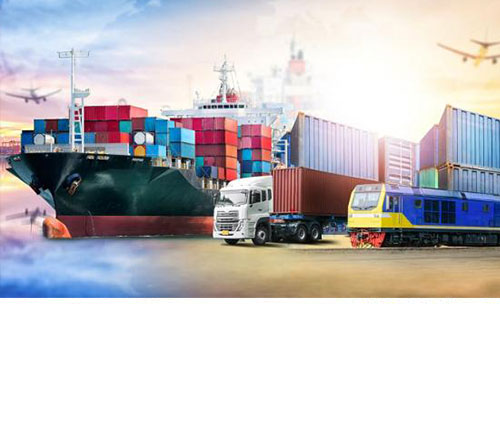Sectors - MANAGEMENT COURSES
CRISIS MANAGEMENTAvailable Courses - TRAINING AND E-LEARNING
Gallagher Marine AcademyCyber Course at Sea
OVERVIEW
Why do we need to know of Cyber Security in the shipping industry?
Why do we need to know how to manage the Cyber Security at sea?
The unique answer is simple: the technologies have already transformed all the processes of work, in other words the ship’s operations are highly based on Information Technology (IT) and Operational Technology (OT).
The digitalization - of course - reduce costs and time and this is true and important specially at sea…
More a ship uses IT and OT, the more she is exposed to the cyber-attack.
We will start remembering the law and rules governing the cyber-securityCalling US Advanced
OVERVIEW
Trading to the United States can be very overwhelming. There are various
federal regulations to which vessels must adhere, and depending on where your vessel(s) is
intending to trade, there may be additional state requirements.
Gallagher Marine Systems understands the complexity that is involved with trading to the U.S.,
particularly for the first time. We devised a short course on the essential items that are needed
to obtain approval for trade in the United States
OIL SPILL: How to respond
OVERVIEW
This course was prepared by experienced former USCG Officers, Master Mariners and Chief Engineers after the analysis of last incidents and pollution in US. The course was also designed as loss prevention mean.
The root cause analysis of most of the marine incidents carried out after marine incidents occurred in US, provided the need to improve the response of the crews in terms of reaction and management. In many cases, they were late, slow, and wrong.
This course was realized to give a practical guide to the shipmaster and his officers and ratings on what to do, when and how and what is the role of the other key actors in order to move harmonized with them towards the final objective to protect the human life, the environment and the property.
Root cause Analysis
OVERVIEW
Root cause analysis is the main part of a complete understanding and corrective action process. If you only fix an identified deficiency then the problem will almost certainly happen again. Instead, looking and investigating deeper to understand why the problem occurred and not only how, then you can fix the underlying cause and the problem will not re-occur. The Root Cause Analysis (RCA) is the subject of this course.
VGP Advanced
OVERVIEW
This course is intended to provide guidance at an advanced level, through both regulatory information and management tools, for vessel Owners, Operators, Managers, Masters, and Officers to take the necessary actions to regulate discharges and to fulfill recordkeeping and reporting requirements outlined in the 2013 Vessel General Permit for Discharges Incidental to the Normal Operation of Commercial Vessels and Large Recreational Vessels (VGP, effective date 19 December 2013), under the authority of the US Clean Water Act of 1973.
The final objective of the course is to provide all the involved officials with an accurate training in order to run the ship in US fully compliant with the Vessel General Permit and have a safe and smooth port operations in US in terms of environmental ground.
Ballast Water Management
OVERVIEW
The use of ballast water on a ship is required for safe and efficient operations, but aquatic invasive species (AIS) that are contained in ballast water can be detrimental to the maritime environment. BWM requirements can be very complicated and violations can waste company resources from resulting fines and vessel delays.
This training course provides an overview of the various invasive species that have caused damage throughout the world and the details the efforts by the International Maritime Organization (IMO) to reduce the spread of AIS.
The general objective of this course, divided in 2 sessions, is to provide an overview of
- the IMO Ballast Water Management Convention and
- U.S. ballast water regulatory requirements and enforcement programs, ballast water management practices and recordkeeping requirements and information on ballast water Management systems.
Port State Control Officers are trained to assess a crew’s knowledge of the BW Management method used onboard, this is why this training course is important!
Contingency Planning & Preparedness
OVERVIEW
In preparing a vessel for U.S. operations, there are many factors that must be considered to ensure compliance. Now that a foundation has been built with the completion of the Introduction to U.S. Regulations course, we will build upon that teaching, taking a deeper look at specific contingency planning obligations for both Tanker and Nontank vessels. The Contingency Planning & Preparedness course will provide an overview of Federal, State, and agency imposed planning requirements; detailing applicability, submission deadlines, plan validity, and more.
Cyber Risk at Sea
OVERVIEW
The Cyber Crimes become a widespread phenomenon, increasingly international and must be effectively counteracted. One of the last attack was againist the most important Shipping Organization, IMO and surely this event has shocked the companies and business operators. Obviously, the cyber attacks are most dangerous specially in the shipping industry for safety reasons. Surely, what we can say is that the human factor is surely considered the weakest link in that chain , the key that the hackers use to penetrate the IT and OT Systems on board a ship or in the office of your company.
The target of this course are: Managers, S&Q personnel, DPA/CSO, S/Is having a role in the shipping industry.
The General Objectives of this Cyber Risk at Sea course are:
- Giving information about the scenario of the most important cyber attacks (in the shipping industry and in other types of Organizations);
- What the most common cyber attacks are and how the hackers can penetrate the systems on board and in the office;
- Why and how you need to implement cyber recommandations;
- The relationship between the Cyber Risk at Sea and the SMS implementation as per regulations.
Cyber Security
OVERVIEW
Cyber Security is strongly conditioned by the people who use devices in their private and business life. What we can confirm is that the human factor is surely considered the weakest link in that chain , the key that the hackers use to penetrate the IT and OT Systems on board a ship or in the office of your company. The Genaral O bjective of this Cyber Awareness Course is to make you conscious about:
- The cyber risk and e most important cyber attacks that have devastated many huge Public and/or Private Organizations
- Why and how to protect your ship, your company and even your own personal affects subject to cyber attack
- Implementation of the best practices to avoid a cyber intrusion.
Cyber Security Basic
OVERVIEW
Every company, organisation and government agency requires competentes in terms of cyber security.
Introduction to US Regulations
OVERVIEW
Trading to the United States can be very overwhelming. There are various federal regulations to which vessels must adhere, and depending on where your vessel(s) is intending to trade, there may be additional state requirements.
Gallagher Marine Systems understands the complexity that is involved with trading to the U.S. and how a course on that matter can help all the companies managements.
We devised a brief course that have the objective of giving an simple overview of essential items that are needed to obtain approval for trade in the United States and in States as California, Alaska, Washington.
Regole per toccare gli USA (corso base)
OVERVIEW
Questo corso fornisce un'introduzione ai Regolamenti vigenti negli Stati Uniti d'America e come vengono applicati sia a livello Federale che a livello Statale.
Parleremo di Alaska, Oregon, California, Texas e Washington cercando di capire in che modo possiamo toccare questi Stati senza problemi.
Inoltre qui leggeremo di quali sono gli impegni contrattuali che il Planholder deve rispettare come definito nel loro piano.
Port State Control (PSC)
OVERVIEW
The Port State Control inspection is often seen as a calamity by seafarers and by ship managers. The reason is that it can potentially generate a detention, which can be really an expensive calamity. Detention means delay, which can produce a financial loss, affects always negatively the good name of the ship, the company and the shipmaster. Finally, the chartering of the ship will become difficult and the main shipping objective, making profit, fails.
This course is a practical guide to prepare the ship and her crew to be compliant and pass a PSC examination without problems. Few or zero deficiencies and reducing the risk of detention
Vessel General Permit (VGP)
OVERVIEW
The course has been specifically designed to fulfill the mandatory general training requirements as required by VGP Sections 2.1.6 and 4.2. All owner/operators of vessels must ensure that the master, operator, person-in-charge, and crew members who actively take part in the management of incidental discharges or who may affect those discharges are adequately trained in implementing the terms of the VGP.
TThe course provides practical knowledge to seafarers to understand, implement and apply VGP requirements and to augment existing Safety Management and Environmental Management Systems for full conformance with VGP.
TDuration of Course including Test questions: About 2 hours 30 minutes


















